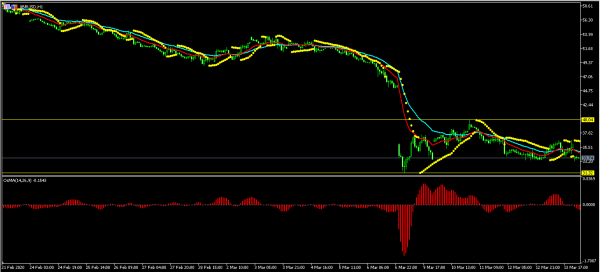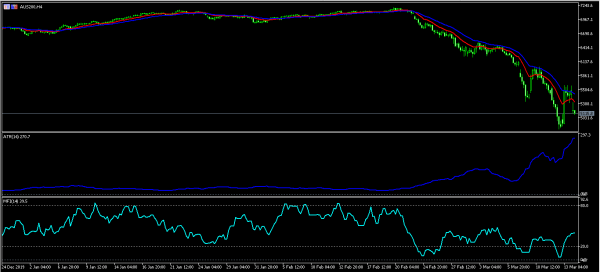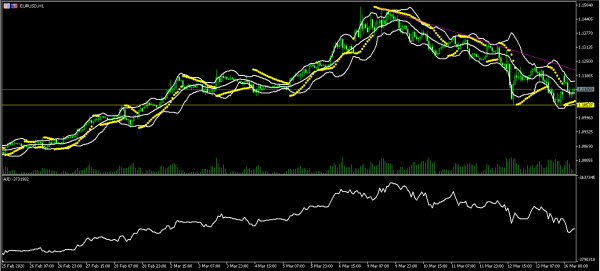Asian stocks and American futures dropped sharply in early trading. Hang Seng, Shanghai, and ASX dropped by more than 2.3%, 0.50%, and 7% while Dow and S&P futures dropped by more than 4%. The reason for the price action is those market participants are concerned about the impact of covid-19 on the global economy. They expect mass bankruptcies and layoffs especially in airlines, cruise lines, hotels, and the energy sector. If this happens, they fear that action from central banks and governments will not be enough. Just on Friday, the US Congress passed a deal that most analysts believe will not do enough to support the economy. The sweeping deal included provisions to expand free testing, provide $1 billion of food aid, and extended sick leave benefits to vulnerable Americans. The deal did not include clauses to cushion American firms.
The US dollar index declined after the Federal Reserve slashed interest by a full one percentage point on Sunday. The bank brought interest rates to zero from the previous range of between 1.0% and 1.25%, which is the lowest level since 2015. The bank also announced other measures to support the economy. It will offer an additional $700 billion in asset purchases, expand repurchase operations, offer dollar swap lines with foreign banks, and offer a credit facility for commercial banks to ease household and business lending. The move came less than two weeks after the bank made a surprise 50-basis points rate cut and a few days before the bank is scheduled to meet. The rate cut happened as part of global coordination among central banks.
Another reason why Chinese stocks fell, was the negative economic data from the country. Data from the National Bureau of Statistics showed how the Chinese economy struggled in February. Fixed asset investments dropped by 24.5%, which was the sharpest decline on record. Industrial production declined by 13.5% after rising by 6.9% in January. This was the biggest decline on the record too. Retail sales declined by a record of 20.5% after rising by 8% in January. Worse, the country’s unemployment rate rose from 5.2% to 6.2%. These numbers paint a picture of what will come from other countries in the next few months.
EUR/USD
The EUR/USD pair rose to an intraday high of 1.1197. The pair then pared back some of these gains and dropped to 1.1085. On the hourly chart, the pair is forming a descending triangle pattern while the price is along the lower line of the Bollinger Bands. The accumulation/distribution indicator has started to move downwards. The pair might make some major swings later today as traders reflect on the actions by the Fed.
XBR/USD
The XBR/USD pair declined to an intraday low of 33.75, which is slightly above last week’s low of 31.32. The price is slightly below the 14-day and 28-day exponential moving averages. The price is also below the dots of the Parabolic SAR. The moving average of oscillator is below the centreline. The pair may continue moving lower as traders’ price-in a recession.
AUS200
The AUS200 index declined to an intraday low of $5093.8. The price is below the short, medium, and long-term moving averages while the average true range has reached a multi-year high. The money flow index has also risen from a low of 1.7 to the current level of 39. The index may continue seeing some volatility as coronavirus continue to spread.













